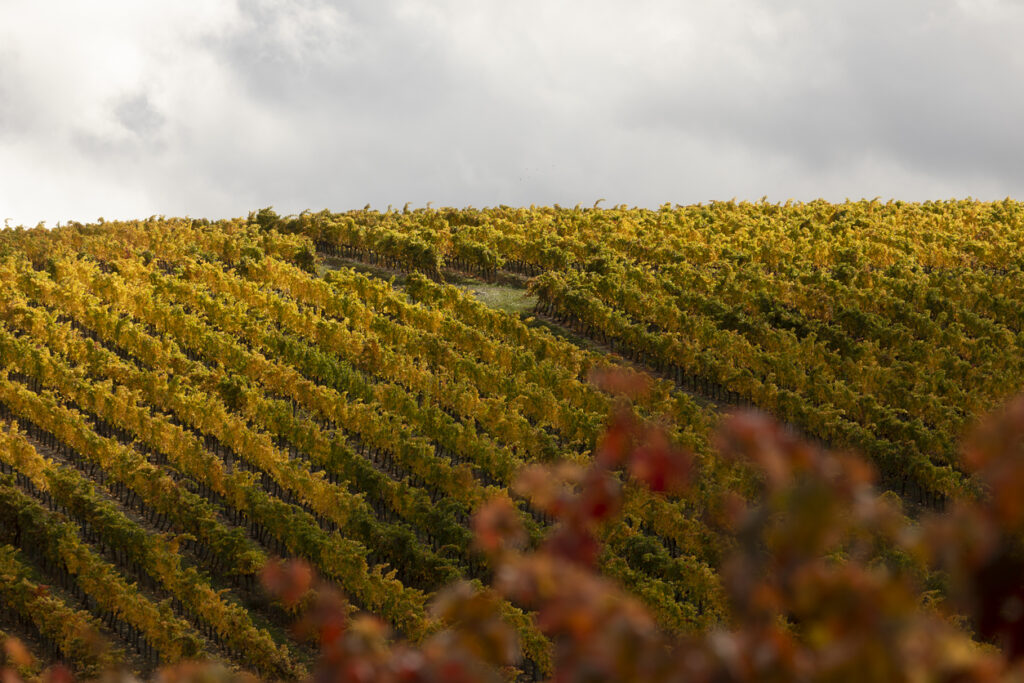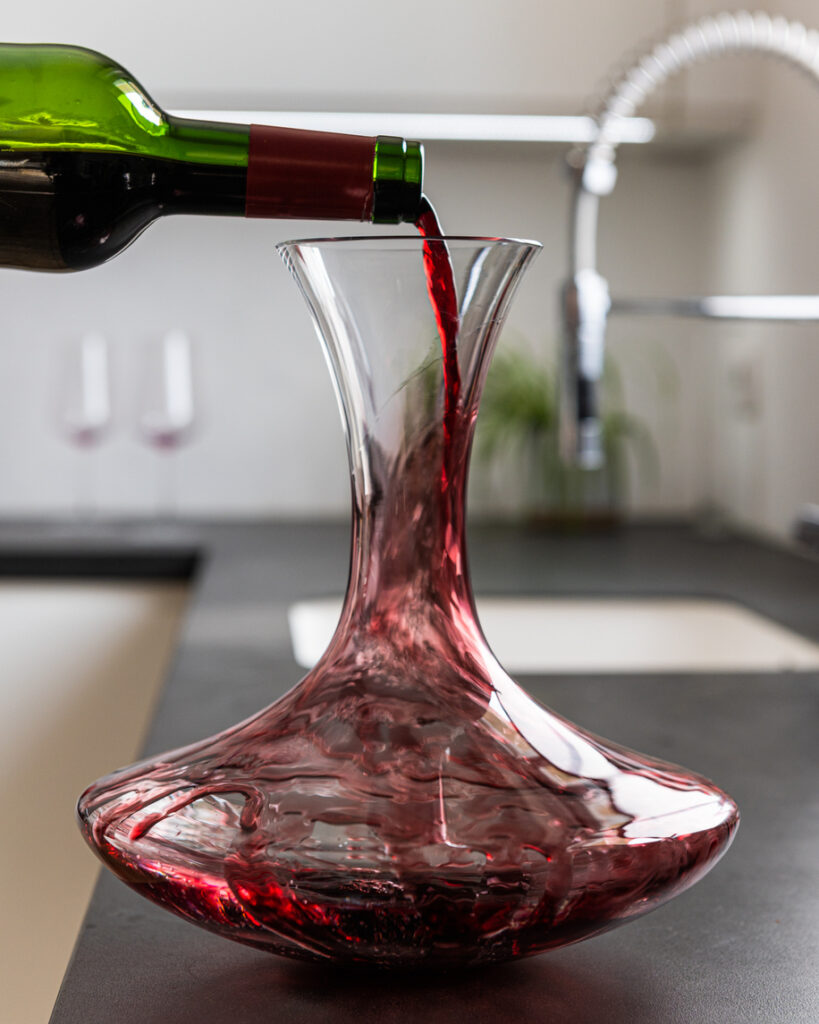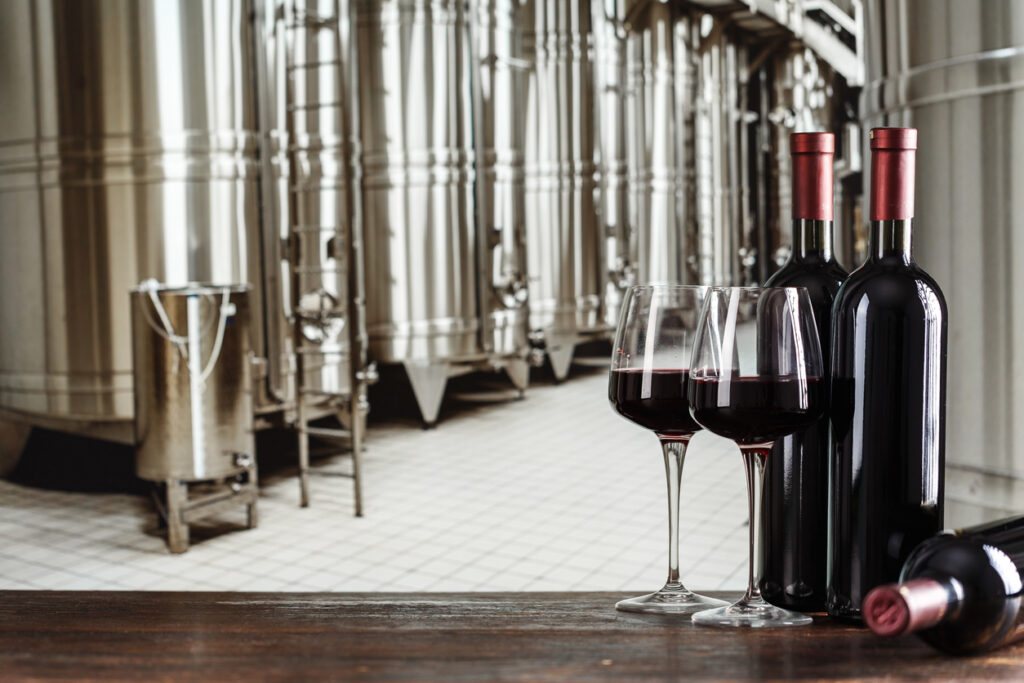Spain is renowned for its diverse and delicious wines, with a rich history spanning thousands of years. Among the many varieties produced in this vibrant country, red wines hold a special place in the hearts of wine enthusiasts. There are 7 primary styles of Spanish red wine that showcase the depth and range of flavors the country has to offer.
From the robust and earthy to the refined and elegant, these distinctive styles highlight the unique terroirs and grape varieties found across Spain’s numerous wine regions. Not only are these red wines delicious on their own, but they also make exceptional partners for the country’s flavorful cuisine. So, let’s embark on a journey to explore these captivating Spanish red wines and their characteristics.
Whether you’re new to the world of Spanish wine or merely looking to broaden your horizons, understanding these 7 primary styles is essential to fully appreciating the incredible diversity of flavors, textures, and aromas these exquisite wines have to offer. As you delve into each style, you’ll soon discover that there’s a Spanish red wine perfectly suited to every palate and occasion.

Understanding Spanish Red Wine
Spanish red wine is a prominent and diverse category in the world of wines, originating from Spain’s vast and varied viticultural heritage. Spain is known for its exceptional red wines, with each region producing distinct flavors and styles.
The versatility of Spanish red wines is due to the unique climate and terroir found throughout the country. The Mediterranean climate, with its warm summers and mild winters, creates the ideal environment for the growth and maturation of grapes. Additionally, the diverse geography—ranging from high-altitude mountains to fertile plains—provides a wide array of soil types, each contributing to the individual characteristics of the wine.

Rioja
It is arguably the most famous region for producing Spanish red wines. Made primarily with the Tempranillo grape, the wines from this area have a range of flavor profiles, from light and fruity to full-bodied and oaky. The oak aging process is a key factor in the development of the wine, imparting rich flavors and great complexity.
Ribera del Duero
Another noteworthy region is Ribera del Duero, which also focuses on the Tempranillo grape. This area produces bold, structured wines with deep fruit flavors and earthy undertones. The high altitude of the vineyards and the distinct soils, rich with limestone, make Ribera del Duero wines unique.

Priorat
The warm region of Priorat in Northern Spain is known for producing powerful red wines. The main grape variety grown here is Garnacha, which contributes to the intense, full-bodied nature of the wines. The steep vineyards and scarce rainfall create highly concentrated and high-quality grapes, resulting in complex and memorable flavors.
Jumilla
Located in Southern Spain, Jumilla is another important region for producing exceptional red wines. Monastrell is the main grape variety used here, producing wines with deep fruit flavors, medium acidity, and firm tannins. The arid region enjoys high-altitude vineyards, which contribute to the intense flavors and unique terroir.

Bierzo and Menica
These regions focus on the lesser-known Mencia grape, producing elegant, aromatic red wines. These wines tend to have a medium-bodied palate and exhibit notes of red fruit, floral, and herbal aromas.
Toro
In Toro, the Tinta de Toro grape variety dominates, which is a local adaptation of the Tempranillo grape. The wines from this region are full-bodied, with high tannins, and are characterized by their dark fruit and earthy flavors.
Rias Baixas
No discussion of Spanish red wines would be complete without mentioning Rias Baixas in the northwest region of Spain. Known for its Albariño white wines, the area also produces red wines from the Caiño Tinto, Espadeiro, and Loureira Tinta grape varieties. These wines boast a delicate complexity, with red fruit flavors and soft tannins, providing a refreshing alternative to the more robust Spanish reds.

Each of these seven primary styles of Spanish red wine brings something unique to the table, showcasing the vast range of flavors, aromas, and terroirs that Spain has to offer.
7 Primary Styles of Spanish Red Wine
Spain is renowned for its diverse and exquisite red wines, offering an array of distinct flavors and styles. Seven prominent styles of Spanish red wine are primarily produced using the following grape varieties: Tempranillo, Garnacha, Priorat, Monastrell, Mencía, Bobal, and Cariñena.
Tempranillo
The most famous and versatile grape variety in Spain, often considered the backbone of many Spanish red wines. This grape produces wines with medium to full-bodied flavors, showcasing a spectrum of flavors, from red fruit to savory tobacco. Iconic regions producing Tempranillo-based wines include Rioja and Ribera del Duero.

Garnacha
The Garnacha (or Grenache) grape is another widely planted grape varietal, especially in the warm regions of Spain. This grape yields juicy, fruit-forward red wines with soft tannins and bright red fruit flavors. Garnacha is predominantly grown in regions such as Navarra, Campo de Borja, and Calatayud.
Priorat
This region in Catalonia known for its powerful and full-bodied red wines. The wines from this region are primarily blends of Garnacha and Cariñena, with other supporting varieties. These wines are characterized by intense dark fruit flavors and a distinctive mineral quality imparted by the unique slate soils of the region.

Monastrell
Monastrell (also known as Mourvèdre) is a full-bodied grape variety that thrives in hot, arid climates. It is predominantly grown in regions such as Jumilla, Yecla, and Alicante. Monastrell wines exhibit rich, dark fruit flavors, often accompanied by spicy and earthy undertones.
Mencia
The Mencia grape is a unique and under-appreciated varietal found mainly in the northwest region of Spain. The wines produced from Mencía grapes are usually medium-bodied with bright acidity, showcasing flavors of red fruit, floral notes, and occasionally, a smoky or meaty character. The most renowned region for Mencía wines is Bierzo, followed by Ribeira Sacra and Valdeorras.

Bobal
This a lesser-known grape variety in Spain, is often overshadowed by Tempranillo and Garnacha. It is primarily grown in the region of Utiel-Requena in eastern Spain. Bobal-based wines can range from light and fruity to more robust and full-bodied, exhibiting flavors of cherry, plum, and blackberry with noticeable tannins and acidity.
Cariñena
The Cariñena varietal (also known as Carignan) is a versatile and high-yielding grape variety commonly found in the regions of Priorat, Montsant, and Cariñena. Wines made from Cariñena grapes display rich, dark fruit flavors with high acidity and pronounced tannins.
In summary, these seven primary styles of Spanish red wine offer a wealth of flavors, textures, and aromas that cater to a wide variety of palates and preferences. Each grape variety and the respective region it grows in contribute to the remarkable depth and diversity of Spain’s red wine landscape.

Key Wine Regions in Spain
Spain is well-known for its diverse and distinctive wine regions, each producing unique styles of red wine. In this section, we will explore some of the primary wine regions in Spain and focus on their red wine styles.
Rioja
This is the most iconic wine region in Spain, situated in the north along the Ebro River. This region is known for its flagship wines made primarily from the Tempranillo grape, with Garnacha, Graciano, and Mazuelo often used as blending grapes. The wines from Rioja can range from fruity and fresh to more full-bodied, aged wines with notes of leather and tobacco.

Ribera del Duero
Moving to the west, Ribera del Duero is another important region that also uses Tempranillo as its main grape, locally known as Tinto Fino or Tinta del País. The region’s high altitude and extreme temperature variations contribute to the production of powerful, intense red wines with excellent aging potential.
La Mancha
In central Spain, La Mancha is the largest wine-producing region in the country. Known for its vast plains and windmills, this region mainly produces red wines from the Tempranillo, Garnacha, and Monastrell grapes. The wines from La Mancha tend to be fruity and easy-drinking, with a more approachable style.
Toro
Located in northern Spain, near the Portuguese border and Douro River. This area is known for its bold, robust red wines primarily made from the Tinta de Toro grape variety, a local clone of Tempranillo. The wines from Toro tend to have high levels of alcohol and tannin, making them suitable for long aging.

Bierzo and Ribeira Sacra
These two regions are located in the northwestern part of Spain, in the province of Galicia. They are known for their distinctive red wines made from the Mencía grape variety. The wines from Bierzo and Ribeira Sacra are typically medium-bodied, with bright acidity and flavors of red fruit, herbs, and floral notes.
Catalonia
In the Catalonia region, located in northeastern Spain, the Priorat appellation has gained international recognition for its intense, full-bodied red wines made mainly from Garnacha and Cariñena grapes. Montsant, another appellation within Catalonia, produces similar red wines but at more affordable prices.

Bullas and Jumilla, Yecla
Jumilla, Yecla, and Bullas are three neighboring regions in southeastern Spain known for red wines made primarily from the Monastrell grape. These regions are characterized by warm, dry climates, which contribute to the production of intense, bold, and fruity red wines.
Overall, Spain offers a diverse array of red wine styles thanks to its numerous wine regions and microclimates. From the elegant and complex wines of Rioja and Ribera del Duero to the more approachable and fruity wines of La Mancha and Valencia, there is a Spanish red wine suited for every palate.
Classification Systems of Spanish Wine
Spain has different classification systems in place to ensure the quality and authenticity of its wines. These classification systems regulate wine production and help consumers identify the various distinctive attributes of Spanish wines.

Denominación de Origen (DO)
This is the primary classification system applied to Spanish wines. This system designates wines with unique geographic characteristics and specific quality standards based on their region of origin. Wines with a DO status must adhere to strict production guidelines, including grape varieties, winemaking techniques, and aging requirements. There are currently more than 70 DOs recognized in Spain.
Vino de la Tierra
This is a subsequent classification level for wines that do not meet the stringent criteria of the DO system but still follow some quality standards. These wines are recognized for their regional character and are typically produced in smaller volumes.
Denominación de Origen Calificada (DOCa)
The highest level of classification is the Denominación de Origen Calificada (DOCa), which is only awarded to regions with a proven track record of consistent high-quality wine production. The DOCa designation indicates that the wines from these regions have met additional quality control measures beyond the DO requirements. To date, only two Spanish wine regions hold the prestigious DOCa status: Rioja and Priorat.

Denominación de Origen Protegida (DOP)
In addition to the national classification systems, some autonomous communities in Spain have their own designation systems, such as the Denominación de Origen Protegida (DOP). This regional classification aims to protect and promote the unique wines and agricultural products of specific regions.
In summary, the classification systems of Spanish wine, including DO, Vino de la Tierra, and DOCa, are essential tools that guarantee quality and uphold the distinct characteristics of wines from different regions across the country. These systems inform consumers about the wine’s origin and ensure that the specific qualities indigenous to each breathtaking region are protected and celebrated.
Aging Categories of Spanish Red Wine
In the world of Spanish red wine, there are primarily three aging categories to consider: Crianza, Reserva, and Gran Reserva. These categories are distinguished by their aging process and time in both oak barrels and bottles, which contributes to their unique flavors and characteristics.

Crianza
These wines are the youngest of the three categories. They require at least two years of aging, including a minimum of six months in oak barrels. For areas like Rioja and Ribera del Duero, Crianza wines typically spend 12 months in oak before bottling. These wines are known for their fresh, fruity flavors and are best consumed within a few years of release.
Reserva
Reserva wines receive more extended aging compared to Crianza. They must age for a minimum of three years, with at least one year in oak barrels. The remaining time can be spent in bottles. Reserva wines tend to have richer flavors and more complexity than their younger counterparts, often balancing fruit and oak influences. These wines can be enjoyed soon after release or cellared for several years to further develop their flavors.

Gran Reserva
Lastly, Gran Reserva wines represent the pinnacle of the Spanish red wine aging process. These wines require a minimum of five years of aging, with at least eighteen months spent in oak barrels. The remainder of the time is spent in bottles, allowing for the development of deep, complex flavors. Gran Reserva wines are usually made from the best grapes of exceptional vintages, resulting in a wine that can age gracefully for many years.
Overall, the aging categories of Spanish red wine are integral to understanding the differences in flavor, complexity, and longevity of the wines within this diverse and renowned wine-producing country.
Popular Grape Varieties in Spain
Spain is home to a diverse range of grape varieties that contribute to the unique and flavorful profiles of the country’s red wines. Among these, the Tempranillo grape is the most widely cultivated and significantly influences the production of Spanish red wine. Tempranillo is primarily used to create full-bodied wines with soft tannins, often complemented by flavors of tobacco, leather, and dark fruit.
Red Grapes
Another popular Spanish grape is Garnacha, also known as Grenache in France, which is crucial for producing fruity red wines. This variety typically yields high-alcohol, medium to full-bodied wines with red fruit flavors and a tinge of spiciness. It is often blended with other grapes such as Cabernet Sauvignon and Tempranillo to enhance the overall wine profile.

Merlot and Cabernet Sauvignon
Cabernet Sauvignon and Merlot are also planted across Spain, although they are more prevalent in other wine regions like Bordeaux. These grapes impart characteristics of concentrated fruit flavors, tannins, and hints of herbaceous notes, particularly when grown in cooler climates within Spain.
Monastrell and Graciano
Graciano is another indigenous Spanish grape that adds a unique touch to the country’s red wines. Possessing an excellent aging potential, this grape variety brings vibrant acidity, floral aromas, and spicy flavors to the wines it is used in.
On the other hand, Mourvèdre – known as Monastrell in Spain – is a red grape variety known for producing deeply-colored, dense, and rich wines, characterized by flavors of dark fruit, meatiness, and earthiness.

Malbec
Finally, it is worth mentioning the presence of Malbec in Spain, although it is more commonly associated with Argentinian wines. Spanish Malbec produces wines with a deep red hue, boasting flavors of dark fruit and a tannic structure that is more restrained compared to its Argentinian counterparts.
In summary, Spain is home to a broad range of grape varieties, each contributing unique characteristics and flavors to the country’s diverse red wines. The most popular grape varieties in Spain include Tempranillo, Garnacha, Cabernet Sauvignon, Merlot, Graciano, Mourvèdre, and Malbec, among others.
White Wines from Spain
In addition to the well-known red wines, Spain is also known for a diverse range of white wines and other styles. Albariño is a popular Spanish white wine grape primarily grown in the Rías Baixas region. This refreshing and aromatic wine has bright acidity, making it perfect for seafood pairings.
Another white grape variety that deserves attention is Viura, also known as Macabeo. Predominantly grown in the Rioja region, Viura provides a crisp and refreshing taste with fruity and floral notes. It is often blended with other grape varieties such as Sauvignon Blanc.

Verdejo is another remarkable white wine grape variety from Spain, mainly grown in the Rueda region. It offers a high level of acidity and distinct notes of citrus and green apple, making it an excellent accompaniment to fish and seafood dishes.
Sparkling Wine
Spain is also the producer of a fantastic sparkling wine called Cava. Made using the traditional Champagne method, Cava is produced mostly in the Penedès region. It is crafted from native Spanish varieties like Macabeo, Parellada, and Xarel·lo, delivering a unique and crisp sparkling wine experience.
Sangria is another beloved Spanish beverage, although not a wine in the traditional sense. It is a fruity punch typically made from Spanish red wine. It`s mixed with fruit juices, soda water, and sometimes liqueurs, resulting in a refreshing, slightly sweet drink.

Sweet Wine
Lastly, Moscatel must be mentioned as a significant Spanish wine style. This sweet dessert wine, made from Muscat grapes, comes from various regions across Spain, including Málaga and the Valencia area. Moscatel offers a luscious, sweet character with intense floral and honeyed qualities.
Spanish red wines often steal the spotlight. It’s essential to acknowledge the wide range of other wines this beautiful country offers. These styles, including white wines like Albariño, Viura, and Verdejo, sparkling Cava, fruity Sangria, and sweet Moscatel, help create the diverse and rich Spanish wine culture.

Spanish Wine Production and Consumption
Spain is one of the world’s most prominent wine-producing countries, with a rich history and diversity in its winemaking regions. The country boasts various climates and landscapes, allowing for a diverse range of grape varieties and wine styles.
With over 2.9 million acres of vineyards, Spain is the third-largest wine producer in Europe. The country is home to numerous wine regions, including the famous Rioja, Ribera del Duero, and Priorat, as well as lesser-known appellations in central Spain and the islands.
Winemaking Techniques
Winemakers in Spain have long been adept at crafting unique and distinctive red wine styles. Traditionally, Spanish reds were known for their age-worthiness, having spent significant time in oak barrels before being bottled and released. However, modern winemaking techniques have led to the production of fresher, fruitier reds that can be enjoyed young.

In conclusion, the Spanish wine industry offers an impressive variety of red wine styles. This is due to its diverse range of growing conditions. Wine enthusiasts can explore traditional aged wines from prestigious regions like Rioja. You can find modern reds from emerging regions in central Spain and the islands. This robust and ever-changing industry ensures that Spain will remain a significant player in global wine production for years to come.

